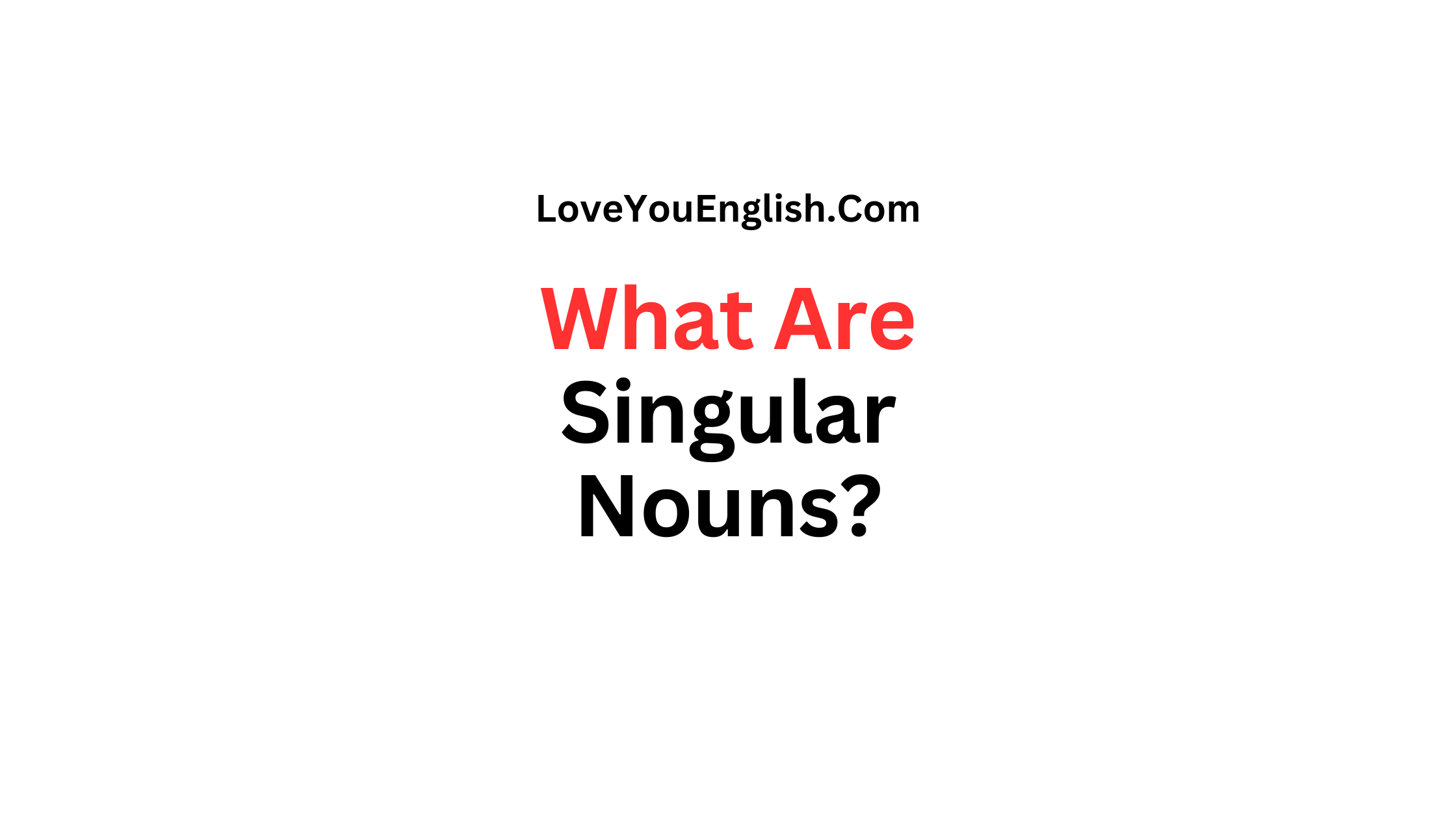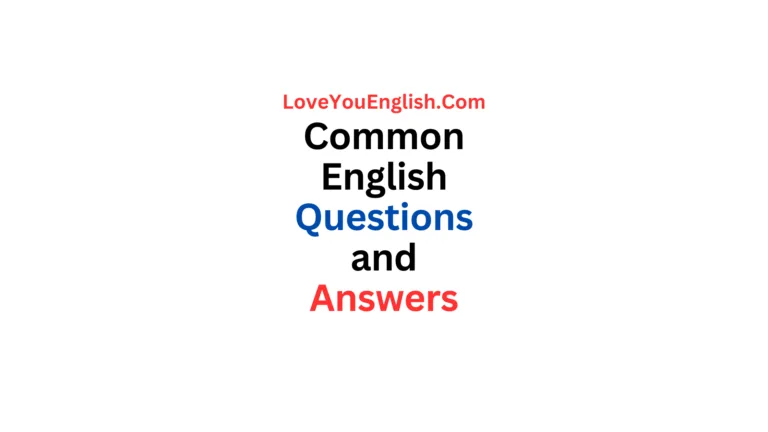What Are Singular Nouns, and How Do They Work?
Nouns are super important in language because they let us talk about things, people, places, and ideas.
One of the simplest kinds of nouns is the singular noun. In this blog post, we’re going to look at what singular nouns are, how they function, and why they matter.
If you’re starting to learn English or need a quick review, I will make it easy for you to grasp singular nouns.
What Is a Singular Noun?
A singular noun is a word that points to just one person, place, thing, or idea.
The term “singular” means “one,” which is why we use singular nouns to describe a single item or thought.
For instance, in the sentence “The cat is sleeping,” the word “cat” is a singular noun since it talks about only one cat.
Examples of Singular Nouns
Here are some common singular nouns:
- Person: teacher, student, friend
- Place: park, city, beach
- Thing: book, car, apple
- Idea: hope, dream, courage
In each of these examples, the noun is talking about just one thing.
If you wanted to talk about more than one of these items, you would need to use the plural form of the noun.
Singular vs. Plural Nouns
To understand singular nouns better, it helps to compare them with plural nouns.
Plural nouns refer to more than one person, place, thing, or idea. For example:
- Singular: dog
- Plural: dogs
You can see that “dog” is singular because it refers to just one dog, while “dogs” is plural because it refers to more than one dog.
To change a noun from singular to plural, you often add an “s” or “es” to the end of the word.
However, there are many rules and exceptions for making nouns plural, which we will cover briefly here:
- Add “s”: cat → cats, book → books
- Add “es”: bus → buses, box → boxes
- Change “y” to “ies”: baby → babies, city → cities
- Irregular forms: man → men, child → children
Understanding these rules can help you use singular and plural nouns correctly in your writing and speaking.
How Do Singular Nouns Work in Sentences?
Singular nouns are used in sentences to identify what or who we are talking about.
They are usually the subject of the sentence, meaning they are the ones doing the action or being described.
Let’s look at some examples to see how singular nouns work in sentences:
- Subject of the Sentence: “The dog barks.” Here, “dog” is the subject and the one doing the action (barking).
- Object of the Sentence: “She reads a book.” In this sentence, “book” is the object that is being read.
- Complement of the Sentence: “He is a teacher.” “Teacher” is a complement that tells us more about “he.”
In each case, the singular noun helps convey who or what we are talking about.
Singular Nouns in Different Parts of Speech
Singular nouns can appear in various parts of speech in a sentence.
Let’s break down some of these uses:
- Subject: The singular noun is the main focus of the sentence.
- “The bird flies in the sky.”
- Object: The singular noun is affected by the action.
- “She found a coin in the sand.”
- Complement: The singular noun gives more information about the subject.
- “My favorite color is blue.”
Common Mistakes with Singular Nouns
Even though singular nouns are simple, there are a few common mistakes that people make.
Here are some of those mistakes and how to avoid them:
- Using Plural Verbs with Singular Nouns
- Confusing Singular and Plural Pronouns
- Incorrect: “The cat lost their toy.”
- Correct: “The cat lost its toy.”
- Use “its” for singular nouns when talking about one thing or animal.
- Misplacing Apostrophes
- Incorrect: “The dog’s are barking.”
- Correct: “The dogs are barking.”
- Don’t use an apostrophe to make a noun plural.
How to Form Singular Nouns
Most singular nouns are easy to form, but there are some rules to follow.
Here are some tips:
- Basic Singular Nouns: Most nouns are singular just by being one item.
- Example: “apple,” “car,” “city.”
- Singular Nouns Ending in “s”: When a noun ends in “s,” it is still singular.
- Example: “dress,” “class,” “bus.”
- Irregular Singular Nouns: Some nouns have special forms or irregular patterns.
- Example: “child” (singular) vs. “children” (plural), “mouse” (singular) vs. “mice” (plural).
Fun Facts About Singular Nouns
Here are a few interesting facts about singular nouns that might surprise you:
- Historical Use: In Old English, there were more complex rules for singular and plural nouns. Over time, English simplified these rules.
- Abstract Nouns: Singular nouns can also be abstract ideas like “freedom” or “love.” These nouns don’t refer to physical things but are still singular.
- Collective Nouns: Some nouns can be singular but refer to a group. For example, “team” is a singular noun but refers to many people.
Tips for Learning Singular Nouns
Here are some tips to help you learn and use singular nouns correctly:
- Read and Listen: Pay attention to how singular nouns are used in books, movies, and conversations.
- Practice Writing: Write sentences using singular nouns to get comfortable with their forms.
- Learn the Rules: Understand basic rules for making nouns singular or plural and practice applying them.
- Ask for Feedback: Share your writing with others and ask for feedback on your use of singular nouns.
Conclusion
Singular nouns are like the basic pieces of language. They let us talk about one person, place, thing, or idea at a time.
When you learn about singular nouns and how they function, you can get better at writing and speaking.
We’ve looked at what singular nouns are, how they are different from plural nouns, and how they fit into sentences.
We also talked about some common mistakes, the rules for making them, and shared some interesting facts about singular nouns.
Remember, getting good at singular nouns is just the first step in learning grammar, but it’s a really important one.
Keep practicing, and you’ll keep improving your use of nouns and other parts of speech.
More grammar topics:
- Understanding the Differences: “Nonetheless” vs. “Nevertheless”
- A Guide to Using “Me” and “I”
- How to Use “Have Got” in English Grammar
- How to Use English Grammar in Everyday Situations
- Differences Between Very, Too, and Enough






